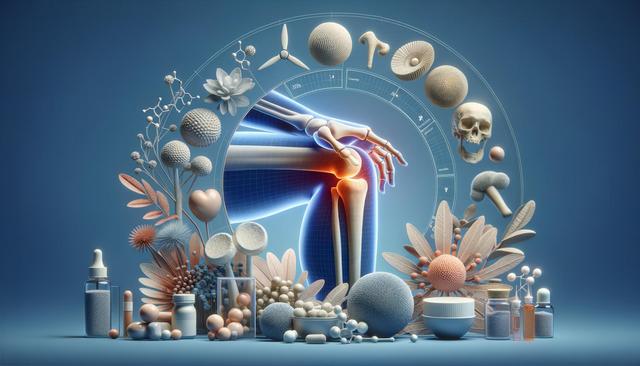Understanding Osteoarthritis and Its Impact
Osteoarthritis is a common joint condition that affects millions of people, particularly as they age. It occurs when the protective cartilage that cushions the ends of your bones wears down over time, leading to pain, stiffness, and reduced mobility. While it can impact any joint, it most often affects the knees, hips, hands, and spine. Understanding how osteoarthritis affects the body is the first step in developing an effective daily routine for osteoarthritis that supports your comfort and functionality.
Living with osteoarthritis doesn’t mean you have to give up your favorite activities or accept daily discomfort. By incorporating osteoarthritis self care tips into your lifestyle, you can improve your ability to manage symptoms and maintain your quality of life. These tips include gentle movement, proper nutrition, and mindfulness techniques that help reduce stress, which can exacerbate pain and inflammation.
How to Manage Osteoarthritis at Home
Managing osteoarthritis effectively at home begins with creating a supportive environment and maintaining consistent habits. Small adjustments in your daily routine can make a meaningful difference in reducing joint strain and enhancing comfort.
- Use ergonomic tools and supportive furniture that reduce pressure on your joints.
- Keep your home organized to avoid unnecessary bending or reaching that can aggravate symptoms.
- Apply hot or cold compresses to sore joints to provide natural relief for osteoarthritis pain.
Many people also find that using over-the-counter topical creams with natural ingredients and incorporating gentle stretches throughout the day can ease stiffness. Practicing self-awareness and listening to your body is essential – rest when needed, but aim to remain as active as your condition allows.
Best Exercises for Osteoarthritis Self Care
Staying active is one of the most effective ways to manage osteoarthritis. Low-impact exercises help maintain flexibility, strengthen muscles that support joints, and reduce stiffness. The key is to choose movements that are gentle yet effective.
- Walking: A simple and accessible way to stay mobile without putting too much stress on your joints.
- Swimming or water aerobics: The buoyancy of water supports your weight, reducing joint strain while improving strength and range of motion.
- Yoga or tai chi: These practices promote flexibility, balance, and relaxation, making them ideal for osteoarthritis self care.
Aim for at least 30 minutes of movement most days of the week, breaking it into shorter sessions if needed. Consulting with a physical therapist can also help tailor the best exercises for osteoarthritis self care based on your individual needs and limitations.
Natural Relief for Osteoarthritis Pain
In addition to physical activity, there are several natural methods that can help relieve osteoarthritis discomfort. These approaches focus on reducing inflammation, supporting joint health, and improving overall well-being.
- Anti-inflammatory diet: Incorporate foods rich in omega-3 fatty acids, antioxidants, and fiber such as leafy greens, berries, nuts, and fatty fish.
- Herbal supplements: Some people find relief using turmeric, ginger, or boswellia, though it’s wise to consult a healthcare professional before adding supplements to your routine.
- Massage therapy: Regular massages can improve circulation and reduce muscle tension around affected joints.
Natural relief for osteoarthritis pain can also include mindfulness practices like meditation or breathing exercises, which help manage stress and may indirectly ease symptoms by lowering cortisol levels in the body.
Building a Sustainable Daily Routine for Osteoarthritis
Consistency is key when it comes to managing osteoarthritis. Establishing a daily routine for osteoarthritis not only supports joint health but also contributes to emotional well-being by creating a sense of stability and control.
- Start your day with a warm shower or gentle morning stretches to reduce stiffness.
- Set reminders to move every hour to prevent joints from locking up.
- Prepare balanced meals ahead of time to ensure you’re eating foods that support joint health.
- Wind down with light stretching, a warm compress, or a relaxing bath to release tension.
Integrating these steps into your daily life can help you better understand how to manage osteoarthritis at home and respond to your body’s changing needs. Regular self check-ins and journaling may also help track what works best for your specific situation, allowing you to fine-tune your approach over time.
Conclusion: Empowering Your Osteoarthritis Journey
Living with osteoarthritis requires patience, adaptability, and a commitment to self care. Fortunately, there are many practical and natural ways to ease symptoms and maintain mobility. By embracing osteoarthritis self care tips, staying active with the best exercises for osteoarthritis self care, and following a supportive daily routine, you can take meaningful steps toward greater comfort and independence. Remember, small changes can lead to lasting improvements when practiced consistently. Listen to your body, seek support when needed, and prioritize your well-being every day.



Leave a Reply